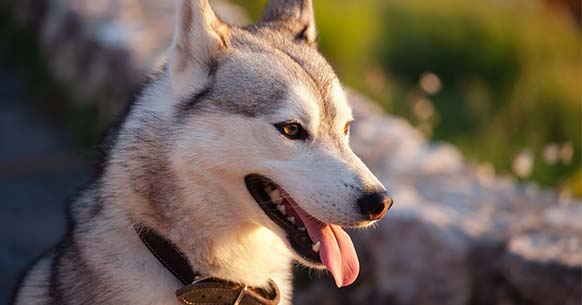Why Punishing My Dog Didn’t Work…
When I first started learning about dog training, I was totally overwhelmed by the vast amount of information available. It was so confusing, even the top dog trainers in the world disagreed with each other on which training method was better.
You’d have Caesar Millan on one hand who advocates the dominance theory, and then you’d also have the exact opposite with Karen Pryor who trains strictly with Positive Reinforcements…
So… Which one is right? And who should I listen to when training my dog?!
To be totally honest with you, I was confused. So I decided to go to my local dog training school and do what they told me. Their training methods were a mixture between the two; they would punish the dog for bad behaviors and reward the dog for good behaviors.
On the surface, this system seemed to work very well – my dogs were obedient. But one day, something strange happened…
I was at a local agility ring, and my dog Onyx (a Siberian Husky) was pulling on the leash very hard, as she wanted to go play with another dog. So I did as I had been told, and I yanked on the leash to correct my dog for the bad behavior. But I could tell that the yanking really hurt my dog, she was moving her tongue as if the yanking on the leash made her bite it.
And to make it worse, other people there were all staring at me like I did something wrong. So I began to question myself… “Did I do the right thing?”
I kept convincing myself that this was the proper response, because that’s what the trainers had told me to do when she pulled on the leash. But was it? Was there an alternative?
My world changed when I asked myself this question: “If I were a dog, how would I like to be trained?”
And my answer was eye-opening! Because I wouldn’t want to be trained with corrections like I was doing.
So I made the decision to learn how the experts in positive reinforcements training were able to train their dogs. And what I discovered was that you really don’t need to correct your dog, you simply need to build the good behaviors strongly enough that it becomes second nature to the dog.
And that’s what I’ve been doing ever since. So it is my hope with this e-mail that you will learn from my mistakes, and also learn a new way of training your dog … because in the end, I think what we really want as dog owners is to have a dog that is happy and behaves nicely. We can have both!
Power Quote: “Positive reinforcement training is in my opinion, the best way to build trust in the relationship with your dog.” – Jean Cote


Love your advice and always read your e-mails. Our rescue dog, Winnie, is a corgi/terrier mix and a sweetheart. We are presently going to training classes with her. The trainer is a woman who also believes in the positive reinforcement method and it’s working for Winnie. At last class she was the only dog that came running across the room to me when I called her from a “stay”. Keep up the good work!
That’s awesome Judy! Don’t forget to pat yourself on the back for sticking with P+ training. 🙂
I had a husky as my very first dog (as an adult ) and learn the dominance reward system. I didn’t agree with that because it seems old school. 1970’s mentality . Scolding your dog all the time changes your relationship with your dog. With this day and age, many teaching modalities have changed. I am around many different dogs in agility , I see and use positive reinforcement. It works so much faster . I have very happy dogs today. They don’t understand wrong from right , all they want is to please you and be connected with you.
This is a little off the subject but when it take my dog to the vet the love going because I have made it a happy experience . They walk in the vets with their tails wagging. I ,often times, sit wih them focused on me (practicing tricks ) They fed off you and feel your tension so I don’t give that to them.
Totally agree. My experience was drastically different when I started training agility strictly with positive reinforcements. It was challenging at times because my dog Onyx had this habit of “leaving me” but over time we overcame this by building more to being around me. This is probably something I could share in another dog training tip. 🙂
Love that you practice tricks at the vet office. I do that too to get my dogs to relax and not be so overly excited or scared.
I would love to teach people about dog etiquette when they are on the trail or walking past each other. So many people stop and their dog is solely focused on the dog that is passing by. Frustrating !
How do you suggest training your dog to do an alert (speak) when you are feeling stressed/anxiety, but also train them not to alert to random noises when it is quiet?